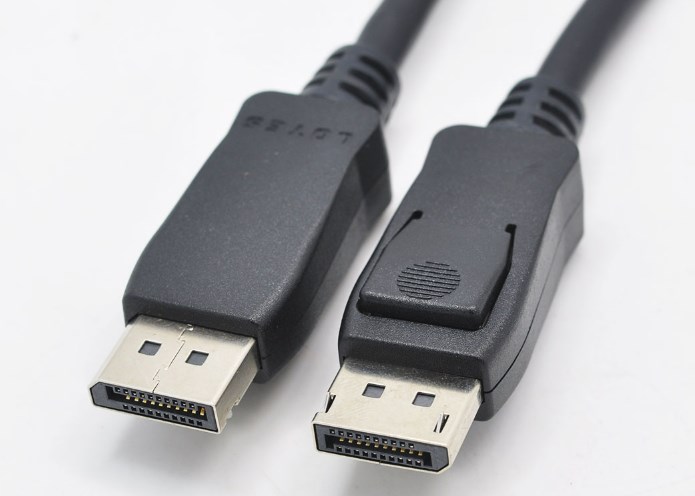Common types
There are several types of DisplayPort interfaces, each using different connectors and specifications. The following are several common DisplayPort interface types:
1. Standard DisplayPort (DP): The most common type, using a rectangular shaped connector. It supports high resolution and high bandwidth and is the most common type of interface used to connect computers and monitors
2. Mini DisplayPort (Mini DP): A smaller DisplayPort interface, usually used to connect laptops, tablets, and some mobile devices to external displays. It has the same performance and functionality as standard DisplayPorti but uses a smaller connector.
3. DisplayPort++ (DP++): Also known as Dual-Mode DisplayPort, it is a DisplayPort interface type that is compatible with HDMI and DVI. By using an adapter or adapter cable, the DisplayPort-++ interface can be directly connected to an HDMI or DVI display device without the need to convert signal formats. This makes it very convenient when compatible with older display devices.
4. USB Type-C with DisplayPort (USB-CDP): The USB-C interface is a multi-functional interface that supports multiple protocols and functions, including DisplayPort. Many modern computers, tablets, and phones use the USB-C interface and support DisplayPorti connections through the USB-C interface. This makes USB-C a widely used DisplayPort interface type.
main application
The DisplayPort interface is widely used in many applications. Here are some common application scenarios:
1. Computer monitor: It is one of the main interfaces connecting computers and monitors. It can transmit high-resolution, high-refresh-rate video signals, allowing users to enjoy clearer and smoother image display. Many high-performance computers and professional monitors support the DisplayPort interface.
2. Video games and entertainment equipment: It is widely used in video games and entertainment equipment. Game consoles, game graphics cards, and high-performance graphics processors usually provide DisplayPort interfaces to achieve high-quality game image and video output.
3. TVs and home theater systems: Many high-definition TVs and home theater systems support the DisplayPort interface. This allows users to connect computers, media players and other video sources to the TV for a larger screen and higher resolution experience.
4. Projector: Many projectors also support the DisplayPort interface, which can project images onto a large screen by connecting to a computer or other video source. This is widely used in business presentations, education and entertainment events.
5. Scientific and engineering applications: In the fields of science, engineering and design, the DisplayPort interface is often used to connect high-resolution monitors and graphics workstations. These applications require accurate and high-definition image displays for data analysis, simulation, and visualization.
6. Multi-monitor configuration: Due to its support of multi-stream transmission technology, it is widely used in multi-monitor configurations. Users can connect multiple displays through a single DisplayPort interface servers and configure them to extend the desktop or mirror the display to increase productivity and multitasking capabilities.
